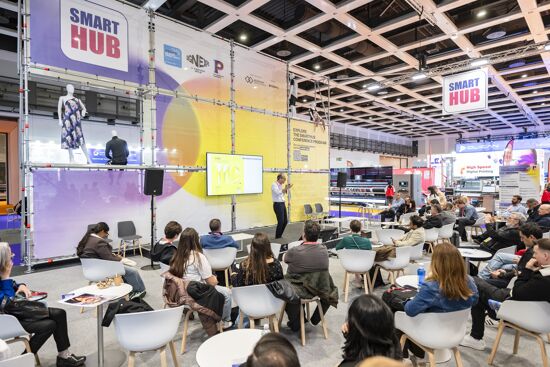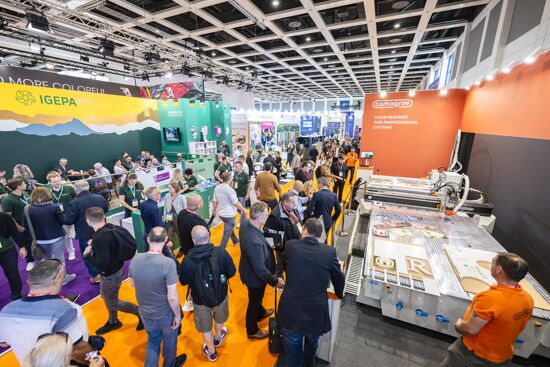Who will set the standards for the 3D printing industry?
As the 3D printing technology is becoming more accessible, it’s key to give companies certifiable evidence, hard numbers and proof for the quality of their parts.
The appetite for Additive Manufacturing (AM) standards is relatively recent. “The initiative came from the AM community,” explains Klas Boivie, Convenor of ISO/TC 261’s working group WG 1 for AM terminology.
“It was very clear that this technology had the capability for much wider industrial application, but the industry was slow and skeptical about using it, unless for very special or non-critical applications.” This motivated a group of key actors within the international AM community to initiate a discussion for the creation of technical standards for AM.
However, since this group could not be certain to gather a wide enough international support, the initiative was brought to ASTM International (formerly the American Society for Testing and Materials), which led to the creation of ASTM committee F42 for additive manufacturing technologies in 2009.
While this debate was going on, the Association of German Engineers (VDI) was hard at work on a series of guidelines for what was then called “rapid technologies”. These guidelines eventually led to the creation of ISO/TC 261, in 2011, whose secretariat is held by DIN, the ISO member for Germany.
With the international AM community being so small, many of the experts invited to review the VDI standard proposal were already involved with ASTM F42. The creation of ISO/TC 261 raised serious concerns about work duplication, or worse, the development of competing standards.
Happily, what might have been a source of discord led to fruitful collaboration between the two organizations and the development of an ASTM/ISO partnership agreement.
Opportunities and constraints
Despite the urgent need for standards to shape the industry, AM standardization is hampered by time constraints and underfunding. Boivie has experienced these first-hand: “Since all standardization work is based on voluntary participation, and has no funding attached with it, this means we have to do our regular work alongside the development of AM standards.”
To ensure that additive manufacturing delivers on promise, it is important to build a foundation that guarantees the reproducibility of AM components. Their strength is that they can be redesigned and could then very well reach superior quality and performance.
Besides, Lenz adds, “We also need quality assurance procedures in cases where standards for AM parts do not exist or where existing standards do not apply completely.”
Meanwhile, more and more organizations are keen to get their foot in the door and develop their own AM standards, which could leave the sector with competing standards after all. As Boivie explains, the community of experts currently involved in the ASTM and ISO collaboration clearly have the broadest expertise in AM technology anywhere in the world.
There is a real risk that standards developed outside this collaboration will not have the same level of insight, which would only stifle the steady development of the technology.
On the horizon
Despite the apparent confusion, though, there is a plan. Priority has been given to terminology and general principles, which will provide the bedrock for the development of any future standards.
When asked where all this is going, Boivie muses, “The use of the AM terminology standard in an open-information database will do a lot to spread the operative ‘word’ and give the industry a common voice.”
What was once considered science fiction – the ability to produce objects on demand – is in the process of becoming a reality. AM is an enabling technology that makes it possible to produce parts that may not have been feasible or realistic in the past, creating endless possibilities for innovation.
So although it is hardly possible to foresee where this technology is taking us, we know our three-dimensional future is looking bright. And with standards in the offing, let’s wager that AM will soon become an industrial strength, improving the way we live our lives.
Three questions about additive manufacturing
Additive manufacturing (AM) is the life passion of Jörg Lenz, Collaborative Projects Coordinator at EOS GmbH, the technology and market leader for design-driven, integrated e-manufacturing solutions for additive manufacturing. With over 20 years’ experience in the field, the Chair of ISO/TC 261 tells us why standards development for the sector is essential.
Can you tell us a little about additive manufacturing at EOS?
For EOS, AM is mostly about developing the right solutions for our customers although we also use laser-sintered components in our own products (machines, peripheral devices, etc.). These are designed by our engineers and manufactured both internally and by external suppliers so that we can make informed decision about how to design, produce, purchase and use AM parts, all based on experience.
What is EOS’ standardization strategy with regard to additive manufacturing?
Our strategy is to actively encourage and support the creation of standards in areas that are relevant to the use of our products. It’s a two-way collaboration.
On the one hand, standards must increase industry acceptance of AM parts, and benefit our customers accordingly; on the other hand, it is easier for us to fulfil our customers’ needs and expectations if they have common requirements, based on standards.
How does EOS’ participation in ISO/TC 161, and in standardization in general, assist the company in its own work?
Standards with a global reach,such as ISO’s, support these goals better than a host of individual standards (e.g. national, industry- or company- specific) relating to the same topic.
Essentially, it helps us to understand our customers’ likes and dislikes, and to achieve our long-term goals.
Topics
Interested in joining our community?
Enquire today about joining your local FESPA Association or FESPA Direct
Recent news

Industry Experts Explore the Evolution of Smart Manufacturing in the Textile Industry
A FESPA SmartHUB roundtable at Personalisation Experience 2025 discussed smart manufacturing's transformative impact on the textile industry. Experts highlighted the shift to on-demand customisation, driven by digital printing, data analytics, and automation. Key takeaways included enhanced machine control, significant waste reduction through intelligent software and colour management, and improved sustainability via energy efficiency and near-shoring, ensuring agility and environmental responsibility in textile production.

FESPA 2025 gathers leading visionaries from across the speciality print industry in Berlin
FESPA Global Print Expo 2025, European Sign Expo and Personalisation Experience (6 – 9 May 2025, Messe Berlin, Germany) welcomed Visionaries from across the speciality print industry to shape the future of print, develop forward-thinking business strategies, and explore innovative ways to translate emerging industry trends into tangible growth opportunities.

Exploring Cutting-Edge Textile Printing Innovation with Adobe Print Engine 7
Adobe PDF Print Engine 7, launched at FESPA Global Print 2025, significantly advances textile printing. Debbie McKeegan shares how it automates non-white substrate management and RGB colour handling, expands colour gamuts with in-RIP multicolour transparency blending, and streamlines workflows for efficiency and sustainability. This update boosts customisation, reduces waste, and positions businesses at the forefront of digital print innovation.

FESPA Global Print Expo 2025 - Overall Highlights
FESPA Global Print Expo, Europe's leading print and signage exhibition returned to Messe Berlin from 6 - 9 May 2025.